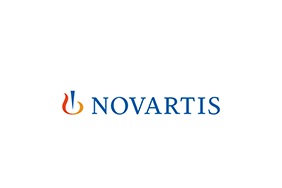Government of Ghana Makes Hydroxyurea Available to People With Sickle Cell Disease Through First of Its Kind Public-private Partnership With Global Medicines Company Novartis
Published 11-11-19
Submitted by Novartis

Today, the Government of Ghana announced the availability of hydroxyurea for the treatment of people with sickle cell disease (SCD), marking the official launch of a first of its kind public-private partnership to improve the diagnosis and accelerate treatment for people with SCD. The launch follows the signature of a Memorandum of Understanding in January among the Ministry of Health of Ghana, Ghana Health Service, the Sickle Cell Foundation of Ghana and global medicines company Novartis to create a holistic approach to help manage the disease. Ghana is the first African country to commit to offering the global standard of care for their people with SCD.
“I am proud of this bold partnership, and it is my hope that, through this collaboration, we will help ease the pain and improve the lives of people living with sickle cell disease in our country. We are committed to put SCD among the priorities on our national health agenda and to take the necessary steps to make treatment broadly available through our National Health Insurance Scheme, bringing much-needed relief to families struggling to cover the cost of care for their loved ones,” said H.E. Alhaji Dr. Mahamudu Bawumia, Vice President of the Republic of Ghana. “Our collective goal is to reimagine what the future could look like for people with sickle cell disease: where children do not need to miss out on school or be singled out; where young adults can have equal opportunity for employment; and where families can flourish and continue to be the bedrock of our civil society—in a nutshell, we will make every effort to ‘normalize’ sickle cell disease within the Ghanaian society.”
To date, Novartis has delivered more than 20 000 treatments of hydroxyurea. Initially, the therapy will be made available through 11 trained treatment centers, as well as through private distribution channels, and is expected to cover the needs of patients for up to 12 months. The partners aim to open more treatment centers by the end of the year, and Novartis is committed to delivering a total of 60 000 treatments. Discussions are aleady underway for inclusion of the medicine and associated laboratory testing in the National Health Insurance Scheme, as well as prioritizing SCD as a national program.
Hydroxyurea is a commonly used medicine for patients with SCD in developed countries, and is approved for use in both adults and children. In October 2018, the Ghana FDA granted marketing authorization to Novartis hydroxyurea, making it the first time that hydroxyurea will be available for this indication in Ghana. A recent study, published in the New England Journal of Medicine3 indicates that hydroxyurea treatment is effective and safe in children with SCD in sub-Saharan Africa and reduces the incidence of pain events (vaso-occlusive crises), malaria, blood transfusions, and death.
“All the traditional names by which SCD is known allude to the episodes of severe pain experienced by people with the disease,” said Prof. Kwaku Ohene-Frempong, MD, President of the Sickle Cell Foundation of Ghana and Program Coordinator for the National Newborn Screening Program for Sickle Cell Disease. “Hydroxyurea is a drug with proven efficacy in reducing pain episodes and other complications of the disease. Currently, the highest standard of care for people with SCD starts with early diagnosis through newborn screening followed by penicillin prophylaxis to prevent early death from infection, and hydroxyurea therapy to ease the pain, prevent other complications and improve quality of life.”
At the same time, Novartis has committed to develop a child-friendly formulation of hydroxyurea and has announced plans to conduct two clinical trials in Ghana and Kenya for its next-generation treatment for SCD, crizanlizumab. Crizanlizumab is a novel targeted biologic therapy that is expected to help reduce pain crises in people with SCD. The trials are expected to start in 2020; this will be the first time that a biologic therapy, which is not a vaccine, enters multicenter clinical trials in sub-Saharan Africa (excluding South Africa)4.
“Novartis is deeply committed to reimagining medicine for patients in Ghana and across Africa,” said Vas Narasimhan, MD, CEO of Novartis. “Building on our long heritage of addressing malaria and leprosy in Africa, we’re excited to help improve the diagnosis and treatment of people with sickle cell disease here in Ghana. Novartis is proud to join this pioneering partnership, which could accelerate efforts to forge a healthier future for children across the continent.”
Sickle cell disease is recognized by the World Health Organization as a public health priority and a neglected health problem in sub-Saharan Africa. Approximately 80% of individuals with
SCD globally are born in sub-Saharan Africa, and there is evidence to suggest that more than half of affected individuals may die before the age of five due to preventable complications. In Ghana, it is estimated that 15 000 babies are born with sickle cell disease every year2.
The five-year partnership aims to improve and extend the lives of people with SCD through a comprehensive approach to screening and diagnosis; treatment and disease management; training and education; and elevating basic and clinical research capabilities. Specifically, the partners aim to collaborate on field testing and implementation of SCD treatment guidelines, the establishment of centers of excellence across regions and the implementation of newborn screening at these centers. In addition, partners plan to employ digital technologies to monitor and evaluate patient registration, report real-time data and help ensure safe large scale roll-out of medicine.
In parallel, Novartis is working with Zipline, a California-based automated logistics company, to make sickle cell treatments widely available, especially in rural areas. Zipline is already operating two distribution centers in Ghana, in Omenako and Asante Mampong, with plans to open two more in the near future.
In addition, in order to help further ensure a sustainable supply of high quality hydroxyurea, Novartis has entered a strategic collaboration with Olon, a manufacturer based in Italy that supplies the active ingredient for the drug. “We are proud to collaborate with Novartis and its partners to help make hydroxyurea more broadly available and in a sustainable way,” said Paolo Tubertini, CEO of Olon. “As a demonstration of our commitment to patients with sickle cell disease and this program, we will also contribute, without cost, the active ingredient to cover approximately 12 000 thousand treatments. Our hope is to continue to meet the needs and challenges of those living with sickle cell disease and their families to improve access to quality health care.”
About Sickle Cell Disease
Sickle cell disease is a deblitating, inherited blood disorder. It causes affected red blood cells to become sickle-shaped, stiff and fragile – easily breaking apart. Blood vessels and blood cells become sticky due to damage caused by sickle cells and ongoing chronic inflammation5,6. That leads to blood cells sticking to each other and to the blood vessels and causing blockages – called vaso-occlusion - which can lead to the acute episodes of pain (known as sickle cell pain crises or vaso-occlusive crises), stroke and other life-threatening complications5,7. It is a lifelong illness that can put an emotional, physical, and financial burden on patients and their families8,9.
SCD is a global health problem, with the highest burden of disease concentrated in sub-Saharan Africa. In countries in West, Central and East Africa, the prevalence of the sickle cell gene is between 10 to 30 percent, while in some areas it is as high as 45%10. It is estimated that approximately 1 000 children in Africa are born with SCD every day and more than half die before they reach five years of age11. This is due primarily to lack of early diagnosis through newborn screening, penicillin prophylaxis, parental education, and comprehensive care. In resource-poor countries, more than 90 percent of children with SCD do not survive to adulthood12. Despite the adoption by the WHO of an SCD strategy for Africa in 2010, the disease is largely absent from the global or national health agenda.
References
- One treatment equals one month’s supply for an adult patient above 33kg of weight
- Odame I. Perspective: We need a global solution. Nature. 2014 Nov;515(7526):S10
- https://www.nejm.org/doi/full/10.1056/NEJMoa1813598
- https://www.clinicaltrials.gov
- Gutsaeva D, Parkerson J, Yerigenahally S, et. Inhibition of cell adhesion by anti–P-selectin aptamer: a new potential therapeutic agent for sickle cell disease. Blood. 2011;117(2):727-735.
- Sparkenbaugh E, Pawlinski R. Interplay between coagulation and vascular inflammation in sickle cell disease. J Haematol. 2013;162(1):1-22.
- Steinberg M. Management of sickle cell disease. N Engl J Med. 1999;340(13):1021-1030.
- Sanger M, Jordan L, Pruthi S, et al. Cognitive deficits are associated with unemployment in adults with sickle cell anemia. Journal of Clinical and Experimental Neuropsychology. 2016;38(6):661-671.
- Anim M, Osafo J, Yirdong F. Prevalence of psychological symptoms among adults with sickle cell disease in Korie-Bu Teaching Hospital, Ghana. BMC Psychology. 2016;4(53):1-9.
- https://www.afro.who.int/health-topics/sickle-cell-disease
- Scott D. Grosse, Isaac Odame, Hani K. Atrash, et al. Sickle Cell Disease in Africa: A Neglected Cause of Early Childhood Mortality. American Journal of Preventive Medicine 41, no. S4 (December 2011): S398-405.
- Bernadette Modell and Matthew Darlison. Global epidemiology of haemoglobin disorders and derived service indicators. Bulletin of the World Health Organization 86, no. 6 (June 2008): 480-487.

Novartis
Novartis
Novartis is an innovative medicines company. Every day, we work to reimagine medicine to improve and extend people’s lives so that patients, healthcare professionals and societies are empowered in the face of serious disease. Our medicines reach more than 250 million people worldwide.
More from Novartis

